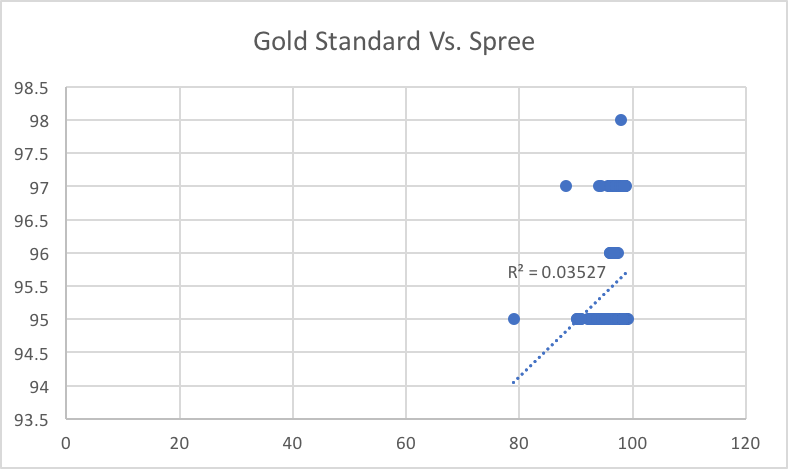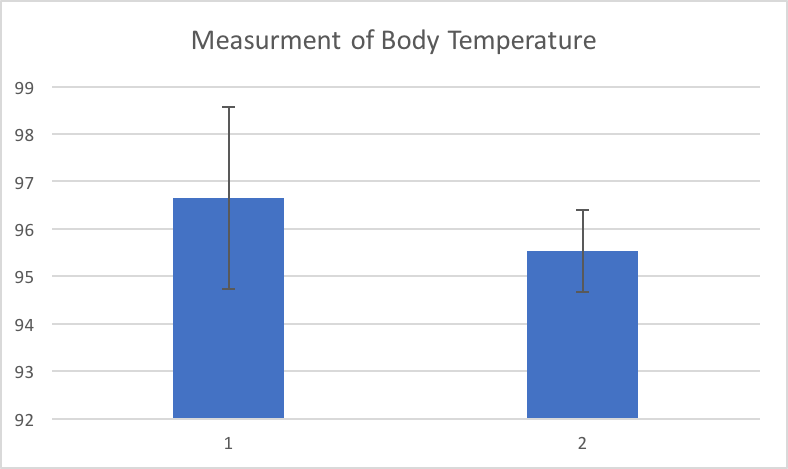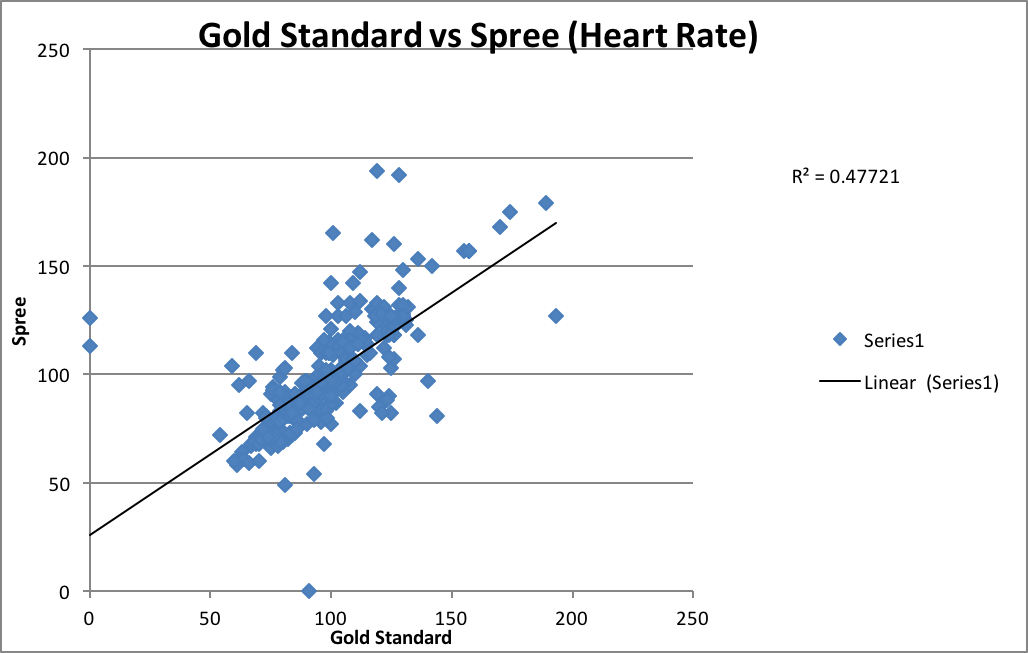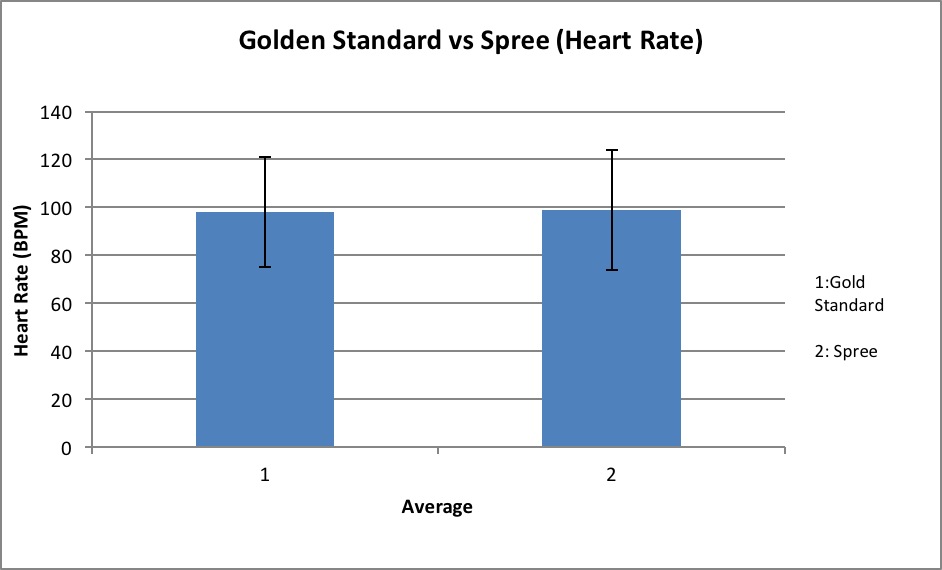BME100 f2017:Group13 W1030 L3
| Home People Lab Write-Up 1 | Lab Write-Up 2 | Lab Write-Up 3 Lab Write-Up 4 | Lab Write-Up 5 | Lab Write-Up 6 Course Logistics For Instructors Photos Wiki Editing Help | ||||||
OUR TEAM
LAB 3 WRITE-UPDescriptive Stats and GraphTemperature: Heart Rate:
Inferential StatsThe inferential statistic that would most fit the data would be the t-test, due to the fact that only two groups are being compared. If multiple groups were being compared, a different method of inferential statistics would be explored. The t-test value for the Spree headband and the oral thermometer is: 1.09676E-21. The t-test value for the Spree headband and the pulse ox gold standard is: 0.427116.
Design Flaws and RecommendationsWhen comparing the results of the temperature readings, the mean values seem as though the Spree headband and oral thermometer are equal, however upon closer examination the Pearson's R coefficient for the test is 0.19287, meaning that the correlation between the Spree headband and oral thermometer exists but since the number is so small, the correlation is weak. The t-test for this experiment is: 1.097E-21, and since that number is much smaller than the 0.05 p-value number, the difference between the two groups is significant. Overall, this shows the Spree headband needs to be reevaluated before it can be a real competitor with the gold standard. The Spree headband needs to be more precise, similar to the gold standard, for example none of the numbers measured with the Spree headband have decimal recordings. When comparing the results of the heart rate readings, the mean values are calculated to be extremely similar, and the p-value from the t-test is calculated to be 0.427116 which shows that the data is not significantly different since It was greater than 0.05. The Pearson's R coefficient came out to be 0.690806 which indicates a relatively strong correlation. Overall, the Spree headband would be an accurate tool for measuring heart rate.
Experimental Design of Own DeviceIndependent Variable: Type of arm (robotic vs actual) Given the complexity of our device, it was determined that the best gold standard to be used should be an actual, functioning arm. Grasp Strength: People will attempt to successfully hold several commonly used items (soap, ball, bottle, writing utensils, paper, cup, etc.) and see if they can hold the items with no difficulty. This is done to assure that the arm will actually be useful in holding everyday items. Weight Capacity: Patients will attempt to hold “heavy” items that one can usually hold with one hand. For example, a textbook or a groceries bag. This is to make sure that the arm isn’t just used to lift lightweight items. Steadiness: People with a fully functionable arm are to trace their hand across a certain path and attempt to stay within the boundaries. The people testing the robotic arm will attempt to recreate (follow) the same path while also staying within the boundaries. This is done to make sure the robotic arm will not have random “spasms” or “seizures” when the patient might. Reaction time: An item will be dropped directly into the hand and the person will attempt to close the hand in time so as to grasp it successfully. This will be done to make sure that the signals sent from the glove to the robotic arm aren’t too slow or sluggish. These tests are necessary because the robotic arm should essentially function the same way a regular arm would. The results obtained from the people with regular arms are to be compared with those obtained from the people using the robotic arm, so as to see how similar these two are.
| ||||||




